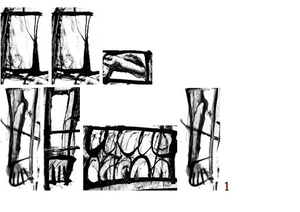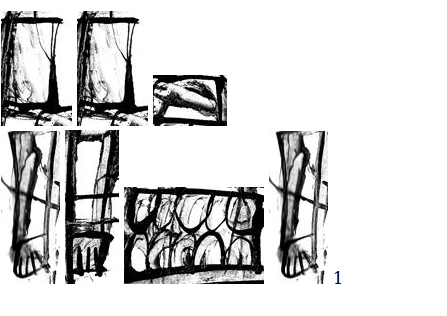Syllabus 2010 t3 p2
The assignment is to create a simple "overview" or list view of your collection.
Due 15 Jun
Example
The following is a simple example from class of a Music viewing application.
First, here's a simple single model (Track), using a text field with choices for giving each track a rating.
models.py
models.py (inside the "application" folder)
from django.db import models
RATINGS = (
('1', '*'),
('2', '**'),
('3', '***'),
('4', '****'),
('5', '*****')
)
class Track (models.Model):
file = models.FileField(upload_to="audio")
rating = models.CharField (max_length=255, choices=RATINGS, blank=True)
email = models.EmailField(blank=True)
def __unicode__ (self):
return self.file.name
urls.py
Write a url pattern that includes an item id:
from django.conf.urls.defaults import *
urlpatterns = patterns('',
(r'^music/$', 'music.views.track_list'),
(r'^music/(?P<id>\d+)$', 'music.views.track_detail'),
)
views.py
Also within your application folder.
from django.shortcuts import render_to_response
from django.template import RequestContext
from models import *
def track_list (request):
context = {}
context['tracks'] = Track.objects.all()
return render_to_response("track_list.html", context, context_instance = RequestContext(request))
Then make a view to see the details of a specifc track:
def track_detail (request, id):
context = {}
context['track'] = Track.objects.get(id=id)
return render_to_response("track_detail.html", context, context_instance = RequestContext(request))
template
<h1>cool audio player</h1>
<img src="" />
<table border="1">
<tr>
<td>Name of track</td>
<td>Rating</td>
</tr>
{% for track in tracks %}
<tr>
<td>
<a href="">
{{ track.file.name }}
</a>
</td>
<td>{{ track.rating }}</td>
</tr>
{% endfor %}
</table>
urls.py
Change "urls.py" to include a mapping from a URL to a view function in your applications "view.py". At the "project" level -- next to "settings.py", you can eventually also create a urls.py inside your application folder and include it from the "outer" urls.py for increased modularity)
from django.conf.urls.defaults import *
from django.contrib import admin
admin.autodiscover()
urlpatterns = patterns('',
(r'^music/', "music.views.track_list"),
(r'^admin/', include(admin.site.urls)),
)
Albert:
from django.db import models
from sorl.thumbnail.fields import ImageWithThumbnailsField
class Poster(models.Model):
title = models.TextField(blank=True)
body = models.TextField(blank=True)
# images = []
def __unicode__(self):
return self.title
parts = (
("e", "eye"),
("m", "mouth"),
("n", "nose"),
("h", "hand"),
)
class Image(models.Model):
image = ImageWithThumbnailsField(
upload_to='images',
thumbnail={'size': (120, 120)},
extra_thumbnails={
'icon': {'size': (32, 32), 'options': ['crop', 'upscale']},
'large': {'size': (640, 640)},
}
)
part = models.CharField(max_length=255, choices=parts)
#poster = models.ManyToManyField(Poster, related_name="images")
def __unicode__(self):
return self.image.name


